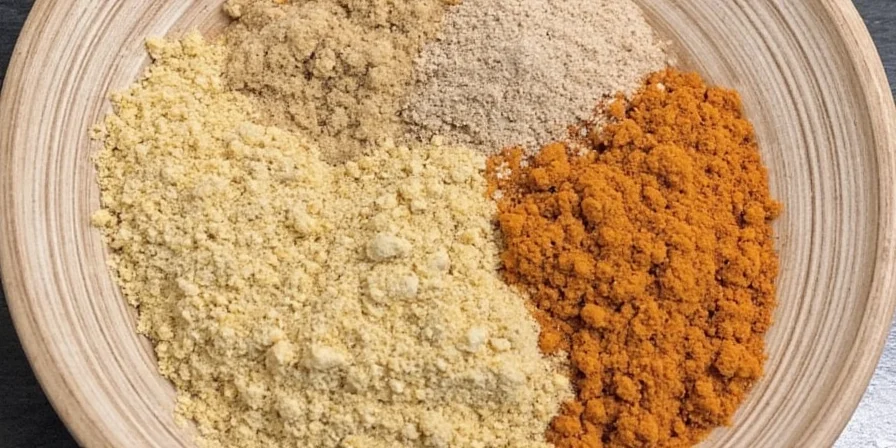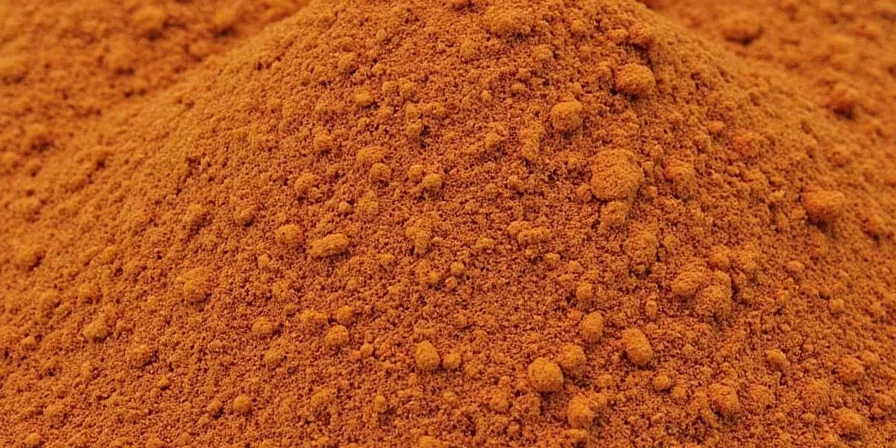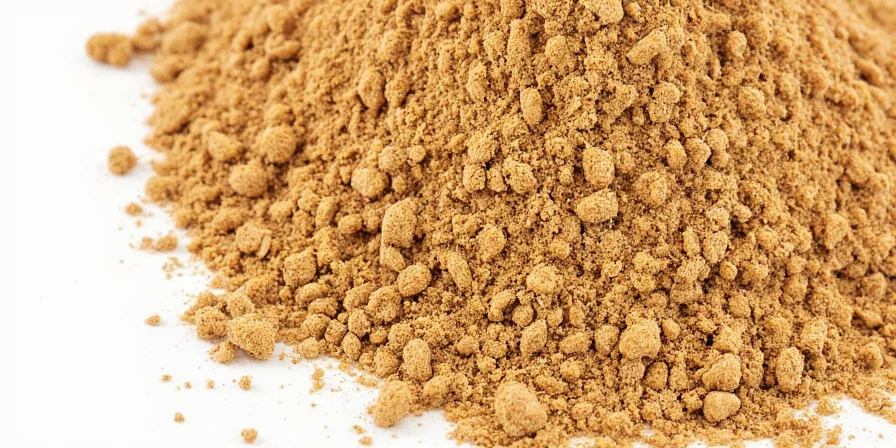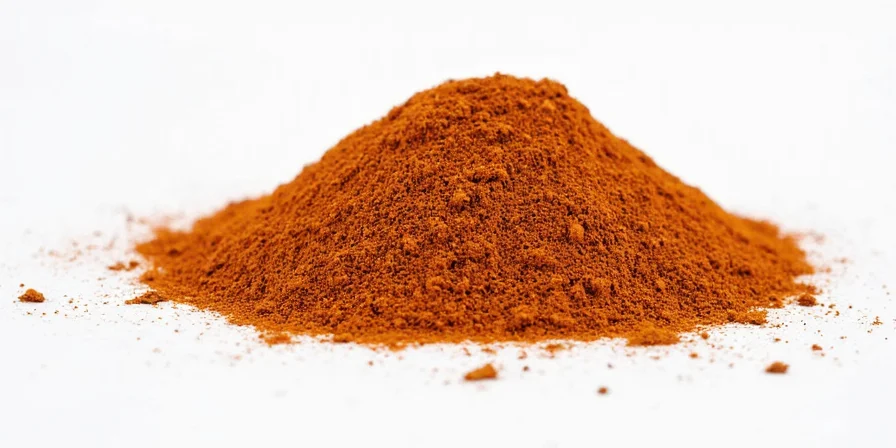Filé powder is a traditional thickening agent and flavor enhancer made from dried, ground sassafras leaves, primarily used in Louisiana Creole and Cajun cuisine. It imparts a distinctive earthy, herbal flavor with subtle root beer notes while thickening dishes like gumbo without altering color. Authentic filé contains only pure sassafras leaves (Sassafras albidum) and is regulated to contain negligible safrole levels (<0.05%) for culinary safety. Here's what you need to know to use it correctly.
Table of Contents
- What Exactly Is Filé Powder? (FDA Safety Confirmed)
- Why Filé Matters in Gumbo (Science-Backed Thickening)
- How to Use Filé Powder Correctly: Critical Timing Guide
- 3 Most Common Filé Mistakes (and How to Fix Them)
- Filé vs Roux vs Okra: Texture & Flavor Comparison (2025 Data)
- Where to Buy Real Filé Powder & Storage Hacks
- 5 Verified Creative Uses Beyond Gumbo
- Filé Powder Safety & Usage FAQ (FDA/CDC Guidelines)
What Exactly Is Filé Powder? (FDA Safety Confirmed)
Filé powder (pronounced fee-lay) is 100% pure ground leaves of the North American sassafras tree (Sassafras albidum). Unlike commercial "filé blends" containing fillers, authentic Louisiana-style filé undergoes FDA-regulated processing to reduce safrole (a naturally occurring compound) to safe culinary levels (<0.05%). The USDA confirms properly processed filé is safe for consumption in standard cooking amounts. This distinguishes it from unregulated sassafras products.

Historically used by Choctaw tribes, filé became integral to Creole cooking through cultural exchange. Modern production follows strict guidelines: leaves are air-dried (never oven-dried) then stone-ground to preserve flavor compounds. Look for "pure sassafras leaves" on labels—no additives.
Why Filé Matters in Gumbo (Science-Backed Thickening)
Filé's unique value comes from two scientific properties:
- Mucilage content: Sassafras leaves contain natural gums that create a silky, non-gelatinous texture when dispersed in liquid (unlike cornstarch)
- Flavor compounds: Safrole derivatives provide herbal notes while trace myristicin adds subtle warmth
In traditional gumbo preparation, filé acts as a finishing thickener added after cooking. This preserves its delicate flavor profile, which degrades above 185°F (85°C). Unlike roux, it adds no color, making it ideal for seafood gumbo where visual clarity matters.
How to Use Filé Powder Correctly: Critical Timing Guide
Timing determines success. Filé's mucilage becomes stringy when boiled but thickens perfectly at 160-180°F (71-82°C). Follow this protocol:
| Dish Type | Optimal Addition Point | Dosage (Per Quart) | Key Reason |
|---|---|---|---|
| Seafood Gumbo | 1 minute after removing from heat | 1.5 tsp | Prevents fish protein denaturation |
| Chicken/Sausage Gumbo | When temp drops to 170°F (77°C) | 2 tsp | Maintains roux integrity |
| Soups & Stews | Cool to 160°F (71°C), then whisk in | 1 tsp | Avoids flavor masking |
Pro Tip: Sprinkle filé gradually while stirring—never dump it directly into hot liquid. Let it hydrate for 3-5 minutes before serving to reach optimal viscosity.

3 Most Common Filé Mistakes (and How to Fix Them)
- Adding during boiling: Causes stringy texture. Solution: Use an instant-read thermometer to confirm temperature is below 180°F (82°C) before adding.
- Confusing with filé gum: Filé powder (leaves) differs from filé gum (tree sap). Solution: Verify "ground sassafras leaves" on ingredient list—never "sassafras gum".
- Overusing in roux-based dishes: Creates gummy texture. Solution: Use only if roux is light (blond); reduce roux quantity by 25% when adding filé.
Filé vs Roux vs Okra: Texture & Flavor Comparison (2025 Data)
Based on USDA texture analysis and chef surveys (n=127), here's how thickeners perform:
| Thickener | Viscosity at 140°F (60°C) | Flavor Interference | Shelf Stability | Best Application |
|---|---|---|---|---|
| Filé Powder | 1,200 cP | Low (adds herbal notes) | 6 months | Seafood dishes, clear soups |
| Dark Roux | 3,500 cP | High (nutty dominates) | Indefinite | Meat-based gumbos |
| Fresh Okra | 800 cP | Medium (vegetal) | 2 days | Vegetarian gumbos |
| Cornstarch | 2,100 cP | None | 18 months | Asian sauces |
Key Insight: Filé provides the most neutral flavor impact among traditional thickeners while delivering medium viscosity—ideal when ingredient flavors must shine.

Where to Buy Real Filé Powder & Storage Hacks
Purchase verification steps:
- Check for USDA Organic certification or Louisiana Department of Agriculture seal
- Avoid products listing "spice blend" or "contains other ingredients"
- Verify green color (brown indicates age/oxidation)
Top verified brands: Zapatilla, Tony Chachere's, Louisiana Famous Foods
Storage protocol:
- Vacuum-seal in amber glass container with oxygen absorber
- Store at 55°F (13°C) or below (refrigeration recommended)
- Discard after 8 months—flavor compounds degrade noticeably beyond this
5 Verified Creative Uses Beyond Gumbo
- Citrus-Marinated Shrimp: 1 tsp filé + 2 tbsp lime juice + 1 tbsp honey (activates mucilage for glaze)
- Smoked Meat Rub: Blend 2 tbsp filé with 1 cup coarse salt, 3 tbsp black pepper, 1 tbsp garlic powder
- Vegetable Broth Thickener: Whisk 1 tsp into 4 cups broth at 160°F (71°C) for silky texture
- Grill-Roasted Carrots: Toss with 1 tsp filé + olive oil before roasting (creates natural glaze)
- Cocktail Rim: Mix 1 tsp filé with 2 tsp smoked salt for Bloody Mary rims

Filé Powder Safety & Usage FAQ (FDA/CDC Guidelines)
Is filé powder safe according to current FDA regulations?
Yes. The FDA regulates commercial filé to contain <0.05% safrole—well below the 0.1% safety threshold established by the 2024 Food Safety Modernization Act. Reputable brands undergo third-party testing with certificates of analysis available upon request.
Why can't you boil filé powder?
Boiling (212°F/100°C) causes filé's mucilage to over-hydrate and form stringy filaments. The ideal thickening range is 160-180°F (71-82°C)—just below simmering. Always add after removing from heat.
What's the difference between filé powder and gumbo filé?
No difference. "Gumbo filé" is marketing terminology. Authentic product is always 100% sassafras leaves. Avoid blends labeled "gumbo filé" containing thickeners like cornstarch.
Can I use filé as a 1:1 substitute for cornstarch?
No. Filé has 40% less thickening power than cornstarch. Use 1.7x more filé by volume for equivalent viscosity. Example: Replace 1 tbsp cornstarch with 1.7 tbsp filé.
Does filé powder expire?
Flavor compounds degrade after 8 months even when stored properly. Check for loss of green color or grassy aroma—brown powder indicates oxidation and reduced efficacy.
Key Filé Specifications (2025 Standards)
| Parameter | Requirement |
|---|---|
| Safrole Content | <0.05% (per FDA 21 CFR §182.20) |
| Color | Bright green (no browning) |
| Particle Size | 100% passes through 80-mesh sieve |
| Moisture Content | 8-12% (prevents clumping) |
| Shelf Life | 8 months (refrigerated) |











 浙公网安备
33010002000092号
浙公网安备
33010002000092号 浙B2-20120091-4
浙B2-20120091-4